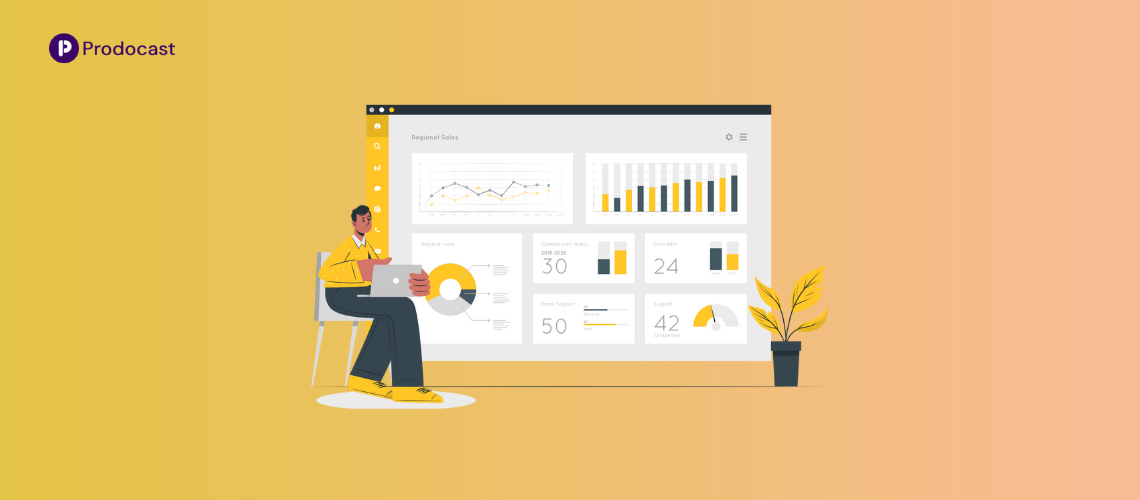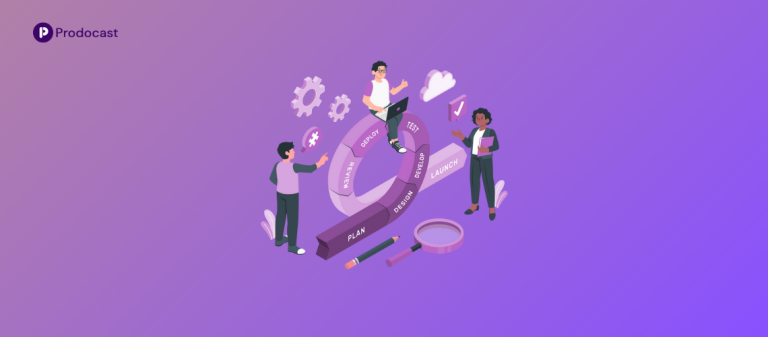In the modern business landscape, data is often referred to as the new oil—an incredibly valuable resource that powers the decision-making engine of every successful organization. But just like oil, raw data must be refined to unlock its true potential. This is where data analytics tools come into play, acting as sophisticated refineries that transform raw, unstructured data into actionable insights. These tools not only illuminate hidden patterns but also guide businesses in predicting future trends, optimizing operations, and improving customer experiences.
As we step into 2024, the market for data analytics tools is more vibrant than ever, with innovations pushing the boundaries of what’s possible. In this guide, we’ve carefully curated a list of the best tools available, ensuring you find the perfect match for your data needs.
What is a Data Analytics Tool?
A data analytics tool is specialized software designed to process, analyze, and visualize large datasets to help organizations make informed decisions. These tools transform raw data into meaningful patterns and trends, which can be used to drive strategies across various business functions.
Key Functions of Data Analytics Tools
- Data Collection and Integration: Tools gather data from multiple sources such as databases, spreadsheets, and cloud services, ensuring all relevant data is in one place.
- Data Cleaning and Preparation: They clean and standardize data, removing inconsistencies to ensure accuracy in analysis.
- Analysis and Modeling: These tools apply statistical methods, machine learning, and algorithms to uncover trends and forecast outcomes.
- Data Visualization: They present data insights through charts, graphs, and interactive dashboards, making complex data accessible and understandable.
Types of Data Analytics
- Descriptive Analytics: Focuses on summarizing historical data to understand past performance.
- Predictive Analytics: Uses historical data and machine learning to predict future outcomes.
- Prescriptive Analytics: Recommends actions to achieve desired outcomes based on data insights.
Whether you’re a small business or a large enterprise, the right data analytics tool can revolutionize how you leverage data, making it an indispensable asset for modern organizations.
Factors to Consider When Choosing a Data Analytics Tool
With numerous options available, selecting the best data analytics tool can be overwhelming. Here’s a closer look at the critical factors to evaluate:
1. Ease of Use and Interface
Your team’s ability to adopt and use the tool efficiently is paramount. Look for software with an intuitive user interface that doesn’t require advanced technical skills. Drag-and-drop functionality, pre-built templates, and straightforward navigation can significantly reduce the learning curve.
2. Integration Capabilities
A good data analytics tool should integrate seamlessly with your existing tech stack, including CRMs, ERPs, marketing platforms, and cloud services. Robust integration capabilities ensure that data flows smoothly across systems, providing a unified view of your business operations.
3. Scalability
As your business grows, so does your data. Choose a tool that can scale with your organization, handling larger datasets, more users, and increasingly complex analyses without compromising performance.
4. Data Security
Data security is non-negotiable, especially in industries dealing with sensitive information. Look for tools that offer strong encryption, role-based access controls, and compliance with data protection regulations such as GDPR or HIPAA.
5. Pricing and ROI
Analyze the total cost of ownership, including subscription fees, training costs, and potential implementation expenses. Consider the tool’s value in terms of time savings, improved decision-making, and enhanced efficiency to ensure a positive return on investment.
6. Customer Support and Community
Even the best tools can present challenges. Reliable customer support, available through multiple channels (chat, phone, email), is vital. Additionally, a strong user community can provide invaluable peer support, best practices, and troubleshooting tips.
By carefully assessing these factors, you can select a tool that aligns with your business objectives and maximizes the value of your data.
Top 10 Data Analytics Tools in 2024
1. Tableau
Tableau stands out as a market leader in data visualization and business intelligence. Its strength lies in its ability to turn complex data sets into visually stunning, interactive dashboards that are easy to understand. With Tableau, even non-technical users can explore data and gain insights through its drag-and-drop interface. Its AI-powered analytics and robust integration with various data sources make it an essential tool for organizations focused on visual storytelling and data-driven decision-making.
Key Features
- Advanced visualizations and dashboards
- AI and machine learning integration
- Support for real-time data analytics
- Seamless data blending and preparation
Pros & Cons
Pros:
- Exceptional visualization capabilities
- Strong community support and resources
Cons:
- Higher cost compared to some competitors
- Requires training for advanced functionalities
Best Suitable For
Organizations needing powerful data visualization tools and interactive dashboards.
Pricing
- Tableau Viewer: $15/user/month (billed annually)
- Tableau Explorer: $42/user/month (billed annually)
- Tableau Creator: $70/user/month (billed annually)
- Tableau Cloud: Starts at $70/user/month
User Reviews
Tableau users appreciate its user-friendly interface and ability to handle large datasets. However, some find the cost challenging, especially for smaller teams.
2. Power BI
Microsoft Power BI is a powerful, affordable tool designed for businesses of all sizes. Its strength lies in its seamless integration with the Microsoft ecosystem, allowing users to pull data from Excel, Azure, and other Microsoft services easily. Power BI offers robust real-time analytics, making it a favorite among organizations looking for a comprehensive and accessible analytics solution.
Key Features
- Real-time data monitoring and reporting
- AI-driven analytics for deeper insights
- Customizable dashboards
- Integration with Microsoft 365 and Azure
Pros & Cons
Pros:
- Cost-effective
- Excellent integration within the Microsoft suite
Cons:
- Can struggle with very large datasets
- Limited customization in the free version
Best Suitable For
Small to medium businesses seeking a cost-effective, scalable analytics solution.
Pricing
- Power BI Free: $0
- Power BI Pro: $13.70/user/month
- Power BI Premium (Per User): $27.50/user/month
- Power BI Premium (Per Capacity): Starts at $4,995/month
User Reviews
Users highlight Power BI’s affordability and real-time capabilities but mention occasional performance issues with extensive datasets.
3. Google Looker
Looker, a part of Google Cloud, is known for its highly customizable and SQL-based data analytics platform. It allows businesses to create tailored analytics solutions that fit their unique needs. Looker’s integration with Google Cloud makes it particularly strong in cloud-based data analysis, providing scalability and performance for enterprises managing large volumes of data.
Key Features
- SQL-powered data exploration
- Embedded analytics for seamless user experience
- Robust collaboration features
- Tight integration with Google Workspace
Pros & Cons
Pros:
- Scalable for large data workloads
- Flexible customization options
Cons:
- Requires SQL knowledge for advanced use
- Higher pricing tiers for small businesses
Best Suitable For
Large enterprises and cloud-focused organizations require customized analytics solutions.
Pricing
- Standard Edition: Custom pricing
- Enterprise Edition: Custom pricing
- Custom Solutions: Tailored pricing based on business requirements
User Reviews
Users praise Looker’s flexibility and scalability but note a learning curve due to its reliance on SQL for customization.
4. Qlik Sense
Qlik Sense is a next-generation data analytics platform known for its unique associative engine, which enables users to explore data intuitively and uncover insights that traditional query-based tools might miss. Its strength lies in its self-service capabilities, allowing users to create their own visualizations and dashboards without relying on IT teams. Qlik Sense also offers robust multi-cloud deployment options, making it a flexible solution for businesses with diverse data storage needs.
Key Features
- Associative data engine for comprehensive data exploration
- AI-powered insights and natural language processing
- Interactive dashboards and data storytelling tools
- Support for on-premise and multi-cloud deployments
Pros & Cons
Pros:
- Superior data exploration with the associative model
- High level of customization and flexibility
Cons:
- Steep learning curve for beginners
- Higher cost for premium editions
Best Suitable For
Enterprises require in-depth data exploration and insights across multiple data sources.
Pricing
- Qlik Sense Business: $30/user/month
- Qlik Sense Enterprise SaaS: Custom pricing based on business size and needs
- Qlik Sense Enterprise Client-Managed: Custom pricing for on-premise deployments
User Reviews
Users love Qlik Sense’s intuitive data exploration and flexibility but often note its complexity during the initial setup. It’s particularly praised for enabling deeper insights that other tools might overlook.
5. SAP Analytics Cloud
SAP Analytics Cloud (SAC) is a comprehensive solution that integrates business intelligence, planning, and predictive analytics in a single platform. Its real-time data capabilities and machine learning algorithms empower decision-makers to analyze current trends and forecast future outcomes. SAC’s strength lies in its tight integration with other SAP products, providing a seamless experience for enterprises already using SAP solutions.
Key Features
- Real-time analytics and reporting
- Predictive analytics powered by machine learning
- Unified platform for analytics and business planning
- Collaboration tools for team-based decision-making
Pros & Cons
Pros:
- Comprehensive suite for analytics and planning
- Excellent integration with SAP ecosystem
Cons:
- Expensive for non-SAP users
- Limited flexibility for non-SAP environments
Best Suitable For
Large enterprises using SAP products that require an integrated analytics and planning tool.
Pricing
- Business Intelligence Edition: Starts at $36/user/month
- Planning Edition: Custom pricing based on planning needs
- Enterprise Edition: Custom pricing for full capabilities, including predictive analytics
User Reviews
Users highlight the platform’s robust capabilities for real-time analytics and planning. However, some note that the pricing can be prohibitive for businesses not already invested in the SAP ecosystem.
6. IBM Cognos Analytics
IBM Cognos Analytics combines AI-powered insights with self-service capabilities, allowing users to uncover hidden patterns in their data. Its strength lies in its ability to automate data preparation and analysis, providing business users with actionable insights without needing extensive technical expertise. Cognos also offers strong integration with other IBM solutions, making it a solid choice for enterprises already using IBM’s ecosystem.
Key Features
- AI-driven insights and natural language query
- Interactive dashboards and reports
- Integration with IBM Cloud and other IBM products
- Customizable data visualization and reporting
Pros & Cons
Pros:
- AI-powered automation for faster insights
- User-friendly for non-technical users
Cons:
- Limited customization outside the IBM ecosystem
- Can be expensive for smaller organizations
Best Suitable For
Organizations looking for AI-driven insights and automated reporting, particularly those already using IBM products.
Pricing
- Cognos Analytics Standard: $15/user/month
- Cognos Analytics Premium: Custom pricing for advanced capabilities and enterprise-level features
User Reviews
Users appreciate its AI-driven automation and ease of use. However, some note that the tool’s advanced features are best suited for larger organizations with bigger budgets.
7. Alteryx
Alteryx is a leading platform for data preparation, blending, and advanced analytics. Its strength lies in automating complex workflows and enabling non-technical users to perform predictive and spatial analytics with ease. With its drag-and-drop interface, Alteryx empowers business users to streamline data preparation tasks that traditionally required extensive coding or IT involvement.
Key Features
- Data preparation and blending
- Predictive, prescriptive, and spatial analytics
- Workflow automation
- Integration with various data sources, including cloud and on-premise
Pros & Cons
Pros:
- Easy to use, even for non-technical users
- Excellent for automating repetitive data workflows
Cons:
- High cost, especially for advanced editions
- Limited visualization capabilities compared to competitors
Best Suitable For
Data analysts and business users who want to streamline and automate complex data workflows.
Pricing
- Designer: Starts at $5,195/user/year
- Designer + Data Packages: Custom pricing
- Alteryx Server: Custom pricing for enterprise deployments
User Reviews
Users appreciate Alteryx’s ability to automate complex workflows and its ease of use for non-coders. The high pricing is a common concern for smaller teams or businesses.
8. Sisense
Sisense is an end-to-end business intelligence platform that excels in embedding analytics into applications and workflows. Its unique in-chip technology optimizes data processing, delivering fast query responses even for large datasets. Sisense’s strength lies in its ability to handle big data efficiently, making it ideal for organizations with significant data processing needs.
Key Features
- In-chip data processing for faster analytics
- Embedded analytics for enhanced user experience
- Customizable dashboards and reports
- Multi-cloud and on-premise deployment options
Pros & Cons
Pros:
- Fast and efficient processing of large datasets
- Highly customizable and embeddable analytics
Cons:
- Requires technical expertise for implementation
- Higher pricing for advanced features
Best Suitable For
Tech-savvy organizations and enterprises with significant data workloads requiring fast, embedded analytics.
Pricing
- Sisense Basic: Custom pricing
- Sisense Enterprise: Custom pricing based on deployment and data needs
User Reviews
Users praise Sisense for its fast data processing and customization capabilities but often highlight its complexity during the initial setup.
9. Zoho Analytics
Zoho Analytics is an affordable and user-friendly data analytics tool designed for small and medium businesses. Its strength lies in its seamless integration with other Zoho applications, making it an excellent choice for businesses already within the Zoho ecosystem. With AI-powered insights and a wide array of pre-built connectors, Zoho Analytics simplifies data analysis and visualization for users of all skill levels.
Key Features
- Pre-built connectors for various data sources
- AI-powered data insights
- Interactive dashboards and visualizations
- Integration with Zoho and third-party apps
Pros & Cons
Pros:
- Affordable pricing
- Easy to use with strong integrations
Cons:
- Limited advanced analytics capabilities
- Smaller user community for support
Best Suitable For
SMBs and startups looking for an affordable analytics tool that integrates well with existing business apps.
Pricing
- Basic Plan: $24/month for 2 users (billed annually)
- Standard Plan: $48/month for 5 users (billed annually)
- Premium Plan: $115/month for 15 users (billed annually)
- Enterprise Plan: $455/month for 50 users (billed annually)
User Reviews
Users appreciate the affordability and ease of integration with other Zoho products. However, some desire more advanced analytics features.
10. Domo
Domo is a cloud-based platform that combines data integration, business intelligence, and advanced analytics in a single, intuitive interface. Its strength lies in its ability to unify data from various sources in real time, providing decision-makers with instant insights. With its vast library of connectors and robust visualization capabilities, Domo is particularly well-suited for organizations seeking a centralized, user-friendly analytics solution.
Key Features
- Real-time data integration and monitoring
- Customizable dashboards and advanced visualizations
- AI-powered alerts and predictive analytics
- Pre-built connectors for over 1,000 data sources
Pros & Cons
Pros:
- Real-time data updates and monitoring
- Highly scalable and customizable
Cons:
- Can be expensive for smaller businesses
- Requires training for advanced features
Best Suitable For
Organizations needing real-time data insights and a centralized analytics platform, especially those with diverse data sources.
Pricing
- Starter Package: $83/user/month for smaller teams.
- Professional Package: Custom pricing based on business size and data usage.
- Enterprise Package: Tailored for large organizations with advanced needs; pricing on request.
User Reviews
Users commend Domo for its real-time capabilities and ease of use but often highlight its cost as a barrier for smaller businesses.
Conclusion
Data analytics tools have become indispensable in today’s data-driven business environment. They not only help organizations uncover valuable insights but also empower them to act decisively and strategically. Whether you’re a small startup looking for cost-effective solutions or a large enterprise in need of advanced analytics and scalability, there’s a tool on this list that fits your requirements.
As we move further into 2024, the importance of data will only continue to grow. Investing in the right data analytics tool will ensure that your organization stays ahead of the curve, making smarter, faster, and more informed decisions. Explore your options, consider your unique business needs, and choose a tool that aligns with your goals. Happy analyzing!
FAQs
What is the difference between BI tools and data analytics tools?
Business Intelligence (BI) tools focus primarily on reporting and visualization of historical data, while data analytics tools cover a broader spectrum, including predictive and prescriptive analytics, offering actionable insights for future strategies.
Are there free data analytics tools available?
Yes, many tools offer free versions or trials. For instance, Power BI has a free tier, and Zoho Analytics offers a freemium model. However, these versions may have limitations in features or data volume.
How do data analytics tools ensure data security?
Most reputable data analytics tools employ robust security measures, including data encryption, role-based access, and compliance with regulations such as GDPR and HIPAA, to safeguard sensitive data.
Can small businesses benefit from data analytics tools?
Absolutely. Many tools are tailored for small businesses, offering affordable pricing and user-friendly interfaces. These tools help small businesses optimize operations, understand customer behavior, and make data-driven decisions.
How do I measure ROI from a data analytics tool?
ROI can be measured by assessing improvements in decision-making speed, accuracy, operational efficiency, and revenue growth attributable to data-driven insights.
Explore Prodocast for more software solutions and free consultations tailored to your business needs. Don’t leave your data analytics to chance—equip your team with the right tools today!




